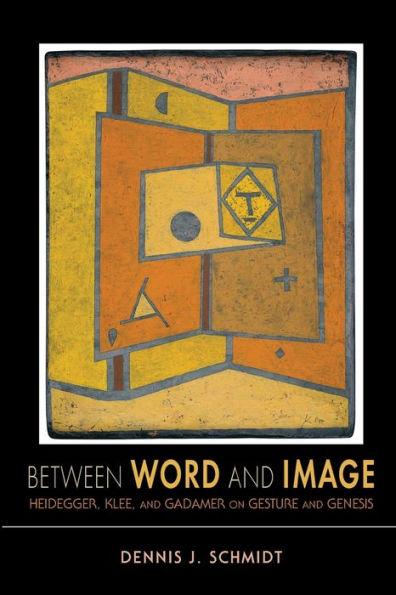Between Word and Image: Heidegger, Klee, and Gadamer on Gesture and Genesis
Engagement with the image has played a decisive role in the formulation of the very idea of philosophy since Plato. Identifying pivotal moments in the history of philosophy, Dennis J. Schmidt develops the question of philosophy's regard of the image in thinking by considering painting—where the image most clearly calls attention to itself as an image. Focusing on Heidegger and the work of Paul Klee, Schmidt pursues larger issues in the relationship between word, image, and truth. As he investigates alternative ways of thinking about truth through word and image, Schmidt shows how the form of art can indeed possess the capacity to change its viewers.
1110992193
Between Word and Image: Heidegger, Klee, and Gadamer on Gesture and Genesis
Engagement with the image has played a decisive role in the formulation of the very idea of philosophy since Plato. Identifying pivotal moments in the history of philosophy, Dennis J. Schmidt develops the question of philosophy's regard of the image in thinking by considering painting—where the image most clearly calls attention to itself as an image. Focusing on Heidegger and the work of Paul Klee, Schmidt pursues larger issues in the relationship between word, image, and truth. As he investigates alternative ways of thinking about truth through word and image, Schmidt shows how the form of art can indeed possess the capacity to change its viewers.
25.0
In Stock
5
1

Between Word and Image: Heidegger, Klee, and Gadamer on Gesture and Genesis
200
Between Word and Image: Heidegger, Klee, and Gadamer on Gesture and Genesis
200
25.0
In Stock

Product Details
| ISBN-13: | 9780253006202 |
|---|---|
| Publisher: | Indiana University Press |
| Publication date: | 11/14/2012 |
| Series: | Studies in Continental Thought |
| Pages: | 200 |
| Product dimensions: | 6.00(w) x 9.00(h) x 0.50(d) |
| Age Range: | 18 Years |
About the Author
What People are Saying About This
From the B&N Reads Blog
